Is Welding Hard to Learn? (Types, Methods & Guide)
Last Updated on
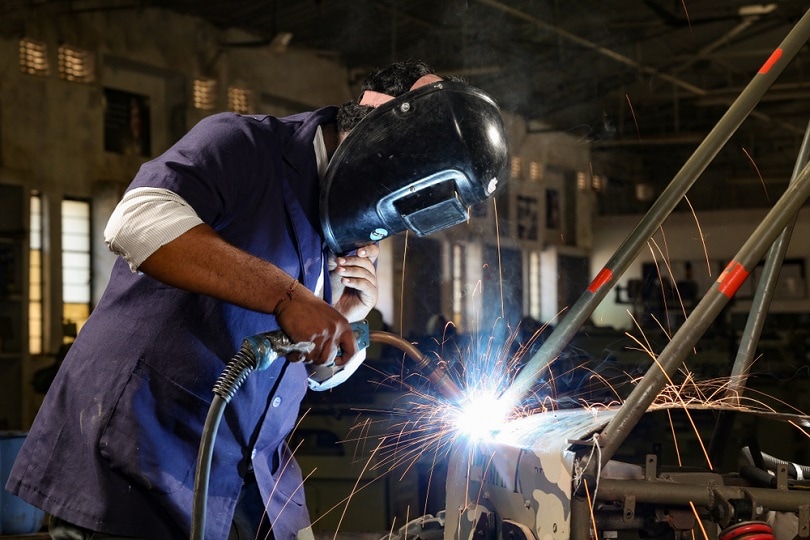
If you have craftsmanship skills and an eye for detail, welding can be a pleasant task for you. It may appear hard at the beginning, but after a fortnight, you’ll be able to understand the basics of welding.
Within a short time, you’ll learn the basics and improve your welding skills from that point on. Most people usually ask, “Is welding hard to learn?” Well, in this article, we’ll answer your welding questions. But first, what is welding?
What is Welding?
Welding is a process where two metal pieces are connected. Though there are other methods of attaching metal, such as riveting, soldering, and brazing, welding is more popular as it’s versatile and feasible.
There are various methods of welding metal. Several ways use heat to thaw the two pieces you’re attaching, and typically, a filler metal is used to bind the parts efficiently. Some welding approaches utilize pressure, while other methods use pressure and heat.
If you’re combining metals using soldering and brazing, the two metal parts maintain their characteristics. During welding, the parts to be connected change. These changes create a strong bond. It’s as powerful as the initial material from which the metals are made of.
Let’s now look at some of the most common types of welding that you’ll also learn.
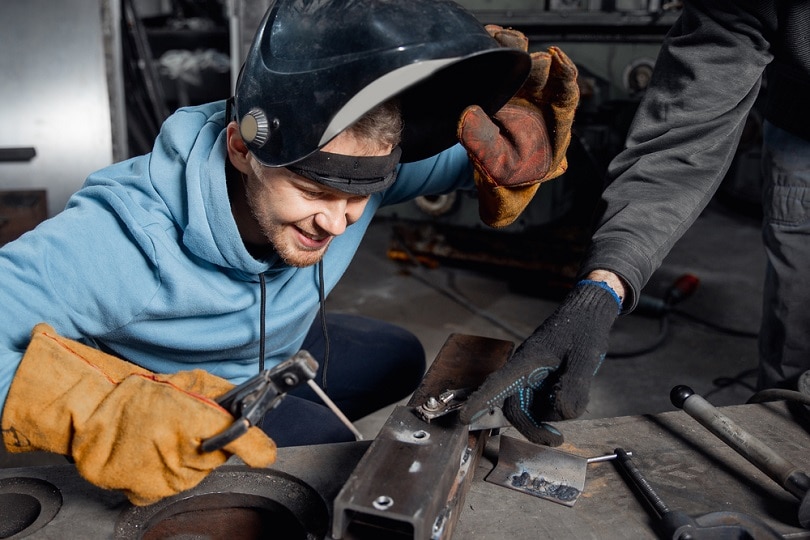
Common Types of Welding
- Wire Welding
This welding type utilizes windings of metal wires passed through a welding gun to lessen disruptions in the welding procedure. This constant procedure enables the welder in forming powerful and perfect joints.
Wire type of welding is quick, more affordable, and perfect for novice welders. This kind of welding is mostly used for thin metallic sheets.
- Stick Welding
If you have small and fast repairs, this is the type of welding for you. Stick welding is the most usually trained type, and rather than using metal cables, a stick anode is used. This type is slow, but it can weld corroded metals together.
- Tungsten Inert Gas Welding
Welding using tungsten or TIG is used in automotive tasks. Experts prefer this type of welding since the results appear clean and well done. TIG is ideal when it comes to combining thin and sheet metallic objects. Tungsten welding comes out as the most difficult, but you can still learn.
Requirements for Getting Into Welding
Training
You can acquire knowledge on how to weld through experience. For instance, if a member of your family owns a garage and earns a living by repairing vehicles, then you might show interest in learning how to weld.
However, the best method of learning how to weld is to go through training from an expert. Only when you’re through with the training will you receive a license to work as a competent welder.
Nonetheless, if you’re not intending to work as a welder and only want to work on projects for individual use, then you don’t need a license.
Materials
To weld distinct materials for different projects, you should have complete and efficient welding materials and tools.
- Work Materials
The work materials are the metal parts that you want to attach. For welding to be fruitful, the materials should be powerful enough to endure heat and be flexible to form a strong bond.
- Protective Materials
Perhaps you’ve seen welders putting on safety gear such as gloves, overalls, protective shoes, welding shields, and more. To safeguard yourself from the excessive heat that torches and the gas emissions. Putting on protective gear is a requisite as they make sure that you complete tasks more effectively and safely.
- Tools
A wide variety of welding tools are available in the shops these days. Some of the most commonly used tools comprise measurement tools, oxyacetylene torches, protective gases, and consumable rods. Also, you require hammers, saws, and clamps.
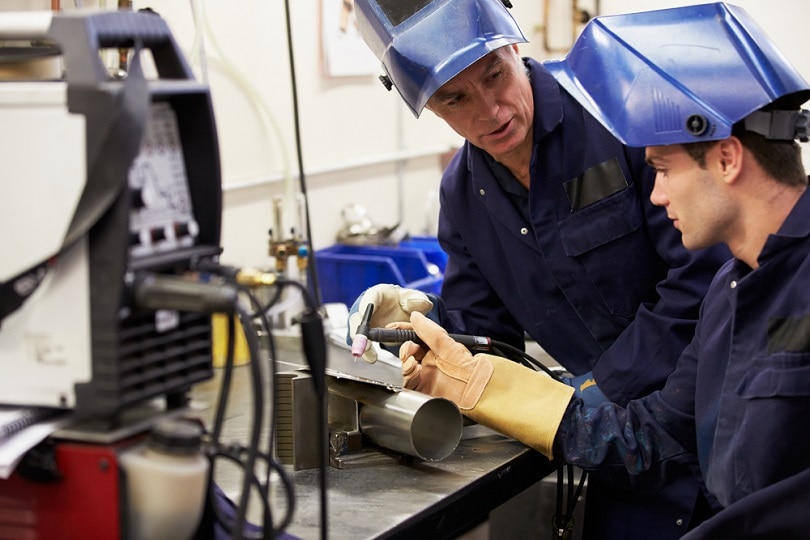
Safety When Welding
Welding utilizes electricity and excessive heat. It’s indispensable to put on safety gear before you start the welding procedure. It’s to safeguard you from these severe conditions.
Irrespective of whether you weld materials at your workplace or home, you have to adhere to the safety guidelines when using electrical equipment and ensure general safety at work. While at home, abide by a “shop safety” list.
This list should contain specific directions on how you can keep your working area or shop safe and clean. It should also comprise tool maintenance because well-kept tools are safer as compared to poorly maintained tools.
Ensure that you’ve kept your materials and tools in suitable places. After using them, they should be ready and well accounted for. And most importantly, you should keep your supplies in a lockable place.
Is It Easy to Do Welding?
Once you’ve acquired the right training, welding is easy. There are diverse requirements in welding tasks, and each one of them is distinct with changing complexity levels.
For example, welders working in shops that make metal furniture find it easy as compared to underwater welders who build oil rigs. Having the correct tools facilitates welding. Nonetheless, the complexity level can increase depending on the welding type used.
For instance, welders who utilize Tungsten Inert Gases require particularized training to use their gear. On the other hand, stick welders may not need comprehensive training. Even so, if you’re experience in the activity, learning welding will be hassle-free.
Beginners may find it difficult and can fail once, two times, or even thrice. However, with time and constant practice, you’re guaranteed that welding will be an easy and rewarding activity. If you relish constructing and producing things, you already have the basis for welding. Learning how to weld is a slow procedure.
You must comprehend how to plug in the electric current to superheat. Also, you have to attach the two metal pieces. Attaching the metal may appear hard, but once you have all the tools in place, the metal will blend well.
Welding may seem disheartening at the beginning. Nonetheless, it’s much easier than you may think. You also have to learn the safety precautions to stop yourself from injury. As soon as you get the rules right, you can work your way up.
Let’s now look at some of the challenges you may face as you learn the various welding techniques.
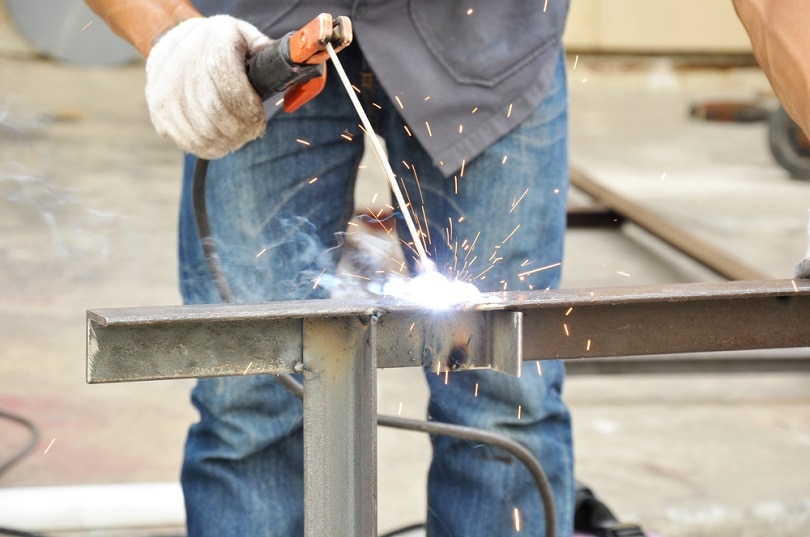
- As it burns, your electrode continuously gets shorter.
You’ll need to adjust the position of your hand as the stick burns down. Most novices won’t hold the tip sufficiently close for the right electrode penetration. This “Long arcing” may lead to an intensely vivid puddle and a flimsy weld.
- Arc starts can be disheartening.
Though it’s the same as striking a match, most novices will keep getting the anode trapped on the steel due to their lack of technique. It’s an entry barrier to completing your first stick weld.
- It’s hard to learn the traveling speed.
Many novice stick welders pull the puddle too quickly or slowly. It leads to disconnection in the bead. You can tell this as the bead will be broader and narrower in various areas.
To get the right bead width, you have to keep the same travel velocity throughout the weld. Usually, it takes a lot of practice and failures as you learn.
- Cold roll is another problem.
There may be a “lack of fusion” along the weld bead edges if your stick angle or amperage of the machine is not right. Rather than becoming flash with the steel, the bead sags a bit because it’s not fully fused to the steel.
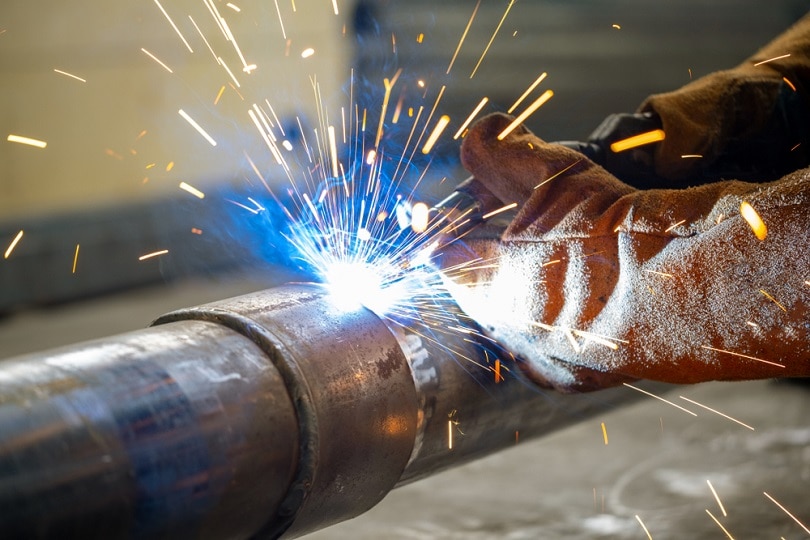
- The MIG welding machine is more intricate to set up.
You’ll need to grapple with the flow of the gas (cubic feet every hour), wire-speed (inches per minute), the drive roll tension (pressure on the cable), and the voltage. Once the MIG (Metal Inert Gas) welding machine is set correctly, welding is hassle-free.
Nonetheless, you have to read your manual completely. Otherwise, you’ll have below average weld beads. As a novice, you may find it disappointing to set your machine up to operate. It’s also tricky for novices when it comes to memorizing the correct settings for various projects.
- There’s a lack of fusion with hardwire MIG.
The welds in MIG welding appear to be more inflexible than a stick weld. Also, low amperage may cause flimsy beads. If you’re a novice and you want to get better penetration of weld, it’s suggested that you constantly get rid of your mill scale using a grinder.
Lack of fusion causes fissures in the weld – this may be a safety risk (particularly on bigger projects).
- Getting the right equipment.
Essential MIG gear like nozzles and contact tips can be confounding for novices. They differ depending on the size of the wire and memorizing it takes time.
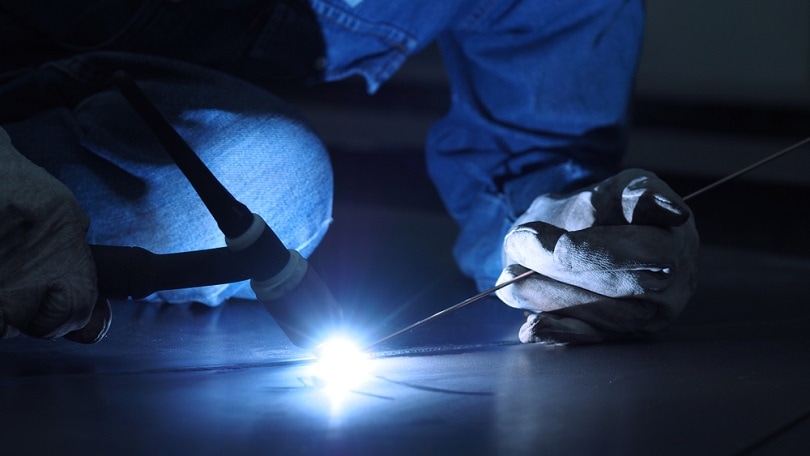
- Foot pedal regulation may be tricky.
The hands are already filled – one is grasping the filler stick and the other one is holding the torch. Besides these tasks, you have to adjust the foot pedal well throughout the bead weld.
This amperage regulation can be disappointing for novices. It may be particularly nagging for beginners who don’t have appropriate synchronization at first.
- For beginners, tungsten contamination takes place frequently.
If tungsten comes into contact with your filler stick or steel, the steel will melt together with it and ball up. Tungsten won’t grasp the solid arc and has to be re-sharpened to weld again. Frequent visits back to the bench grinder to acuminate tungsten can make novices feel as if they’re not progressing.
- Novice welders have to grapple with incongruity in their welds.
As a beginner, you’ll lay an excellent bead here and there. However, you’re likely to struggle with the procedure for some time. It’s very normal. Your beads will still mirror the fact that you’re a novice until your approach becomes fluent.
- It’s hard to weld vertically and overhead with TIG.
Because of positioning your arm, welding vertically and overhead using Tungsten Inert gas welding is hard. Beginners may get discontented by the clumsy movement of hands these positions need. It causes more contamination with tungsten and weld malfunctioning.
The Upper Side of Welding
The best thing about welding is that you’ll always have something new to do. With welding, you’ll always have a new project to work on and look for extra cash. You’ll also learn new skills always as there are innumerable assignments.
A full-time job can be monotonous. Doing the same things daily is a continuous routine. However, welding is amusing. A large part of acquiring skills is part of the growing procedure. You’ll find that you want to enhance and better yourself as a welder.
Best Method of Starting Welding
Getting some sort of hands-on experience is the best method to begin welding. When you’re beginning welding school, you don’t want to be surprised; you want to understand what you’ll be getting into.
Before you commit yourself to school, you can attend an info session or a workshop before you start learning. Visit a shop in the vicinity and enquire if you can shadow a worker. They’ll train you on becoming a welder without the need of committing yourself to a school right away. As you begin to practice gradually, you’ll find out what works best for you.
Learning Welding is Easy
If you’re a beginner in welding or you’re just beginning to train for it, don’t get too concerned. Provided you’re attentive and you adhere to the safety rules, then welding will be a breeze. However, you’ll not learn the welding process at one time.
Nonetheless, train and work hard as much as possible. There’s a huge need for welders in the locality and also overseas.
To handle welding tasks in distinct industries such as building, automotive, oil and shipping, and many more, you require additional training. Therefore, go for the training as it’s easy.
Featured image credit: Shivani Hasraj Dhargave, Shutterstock
